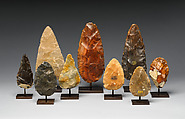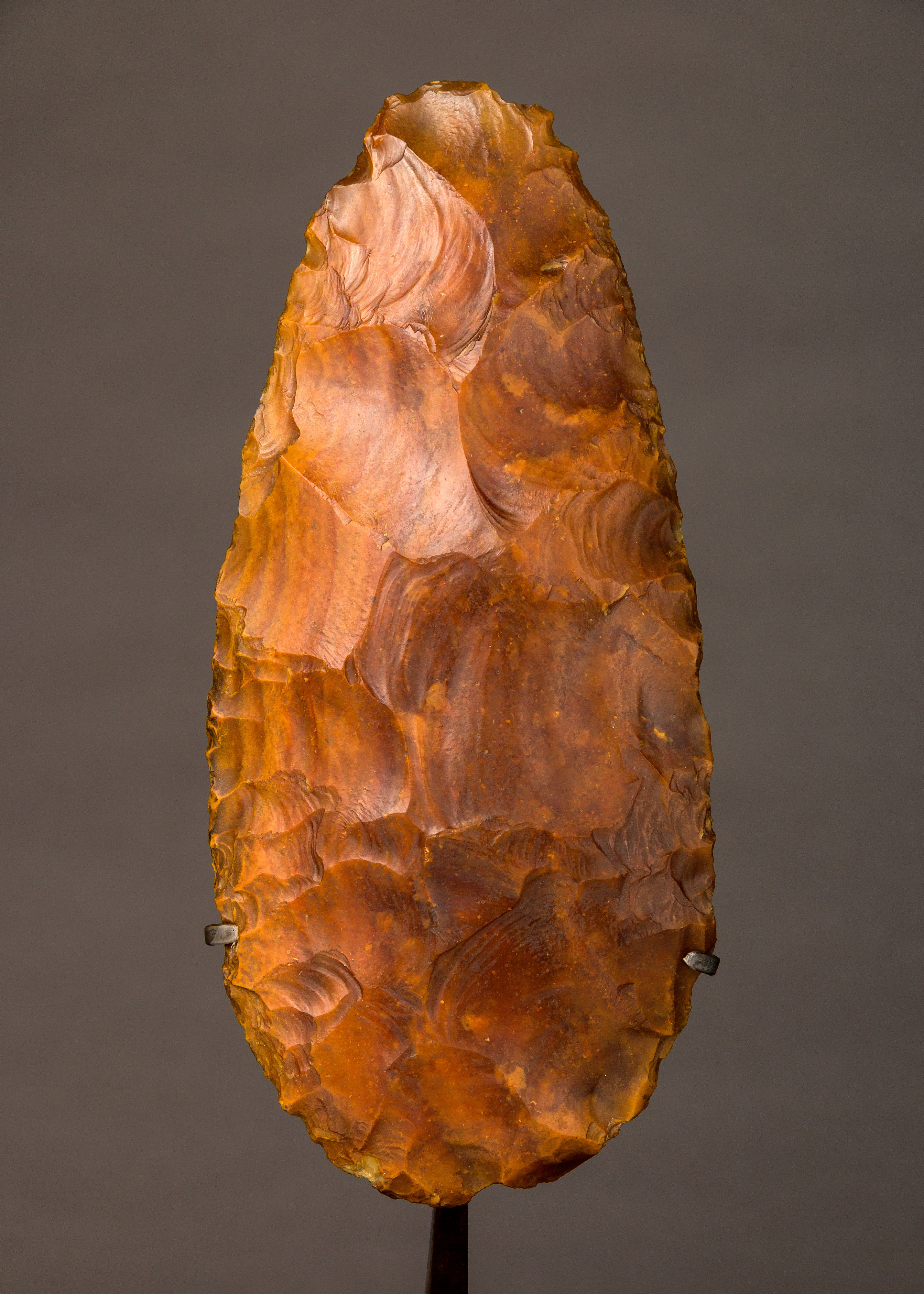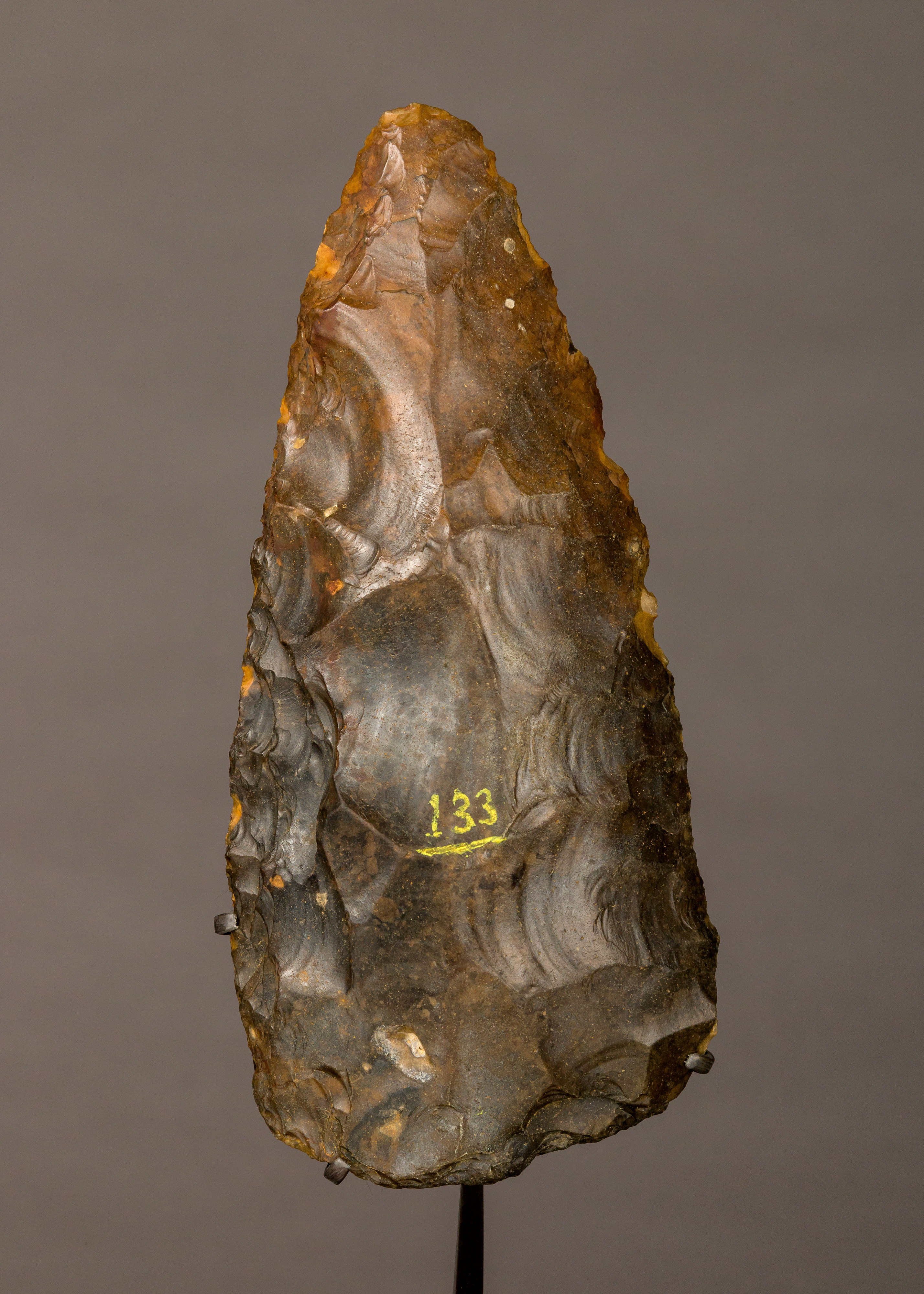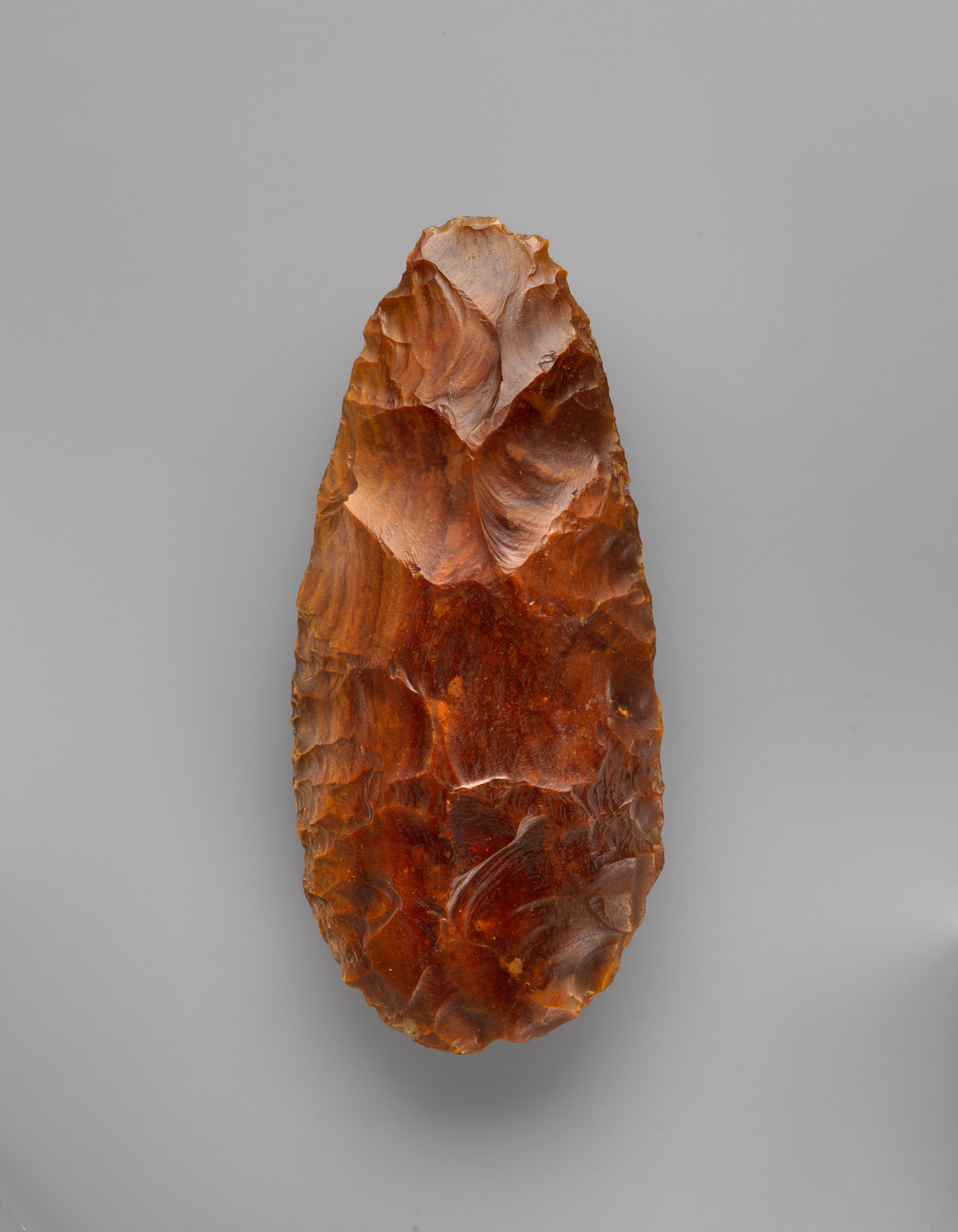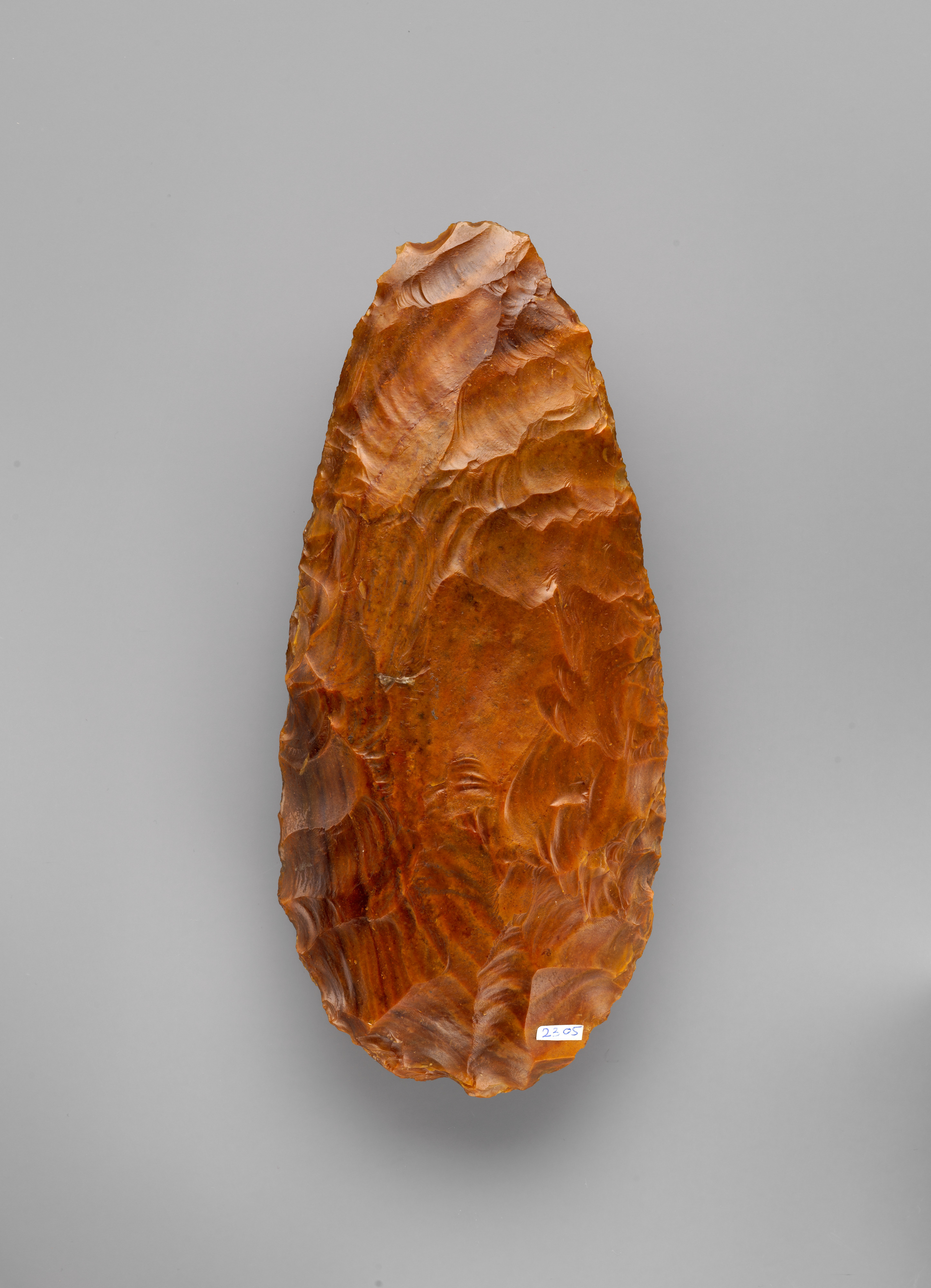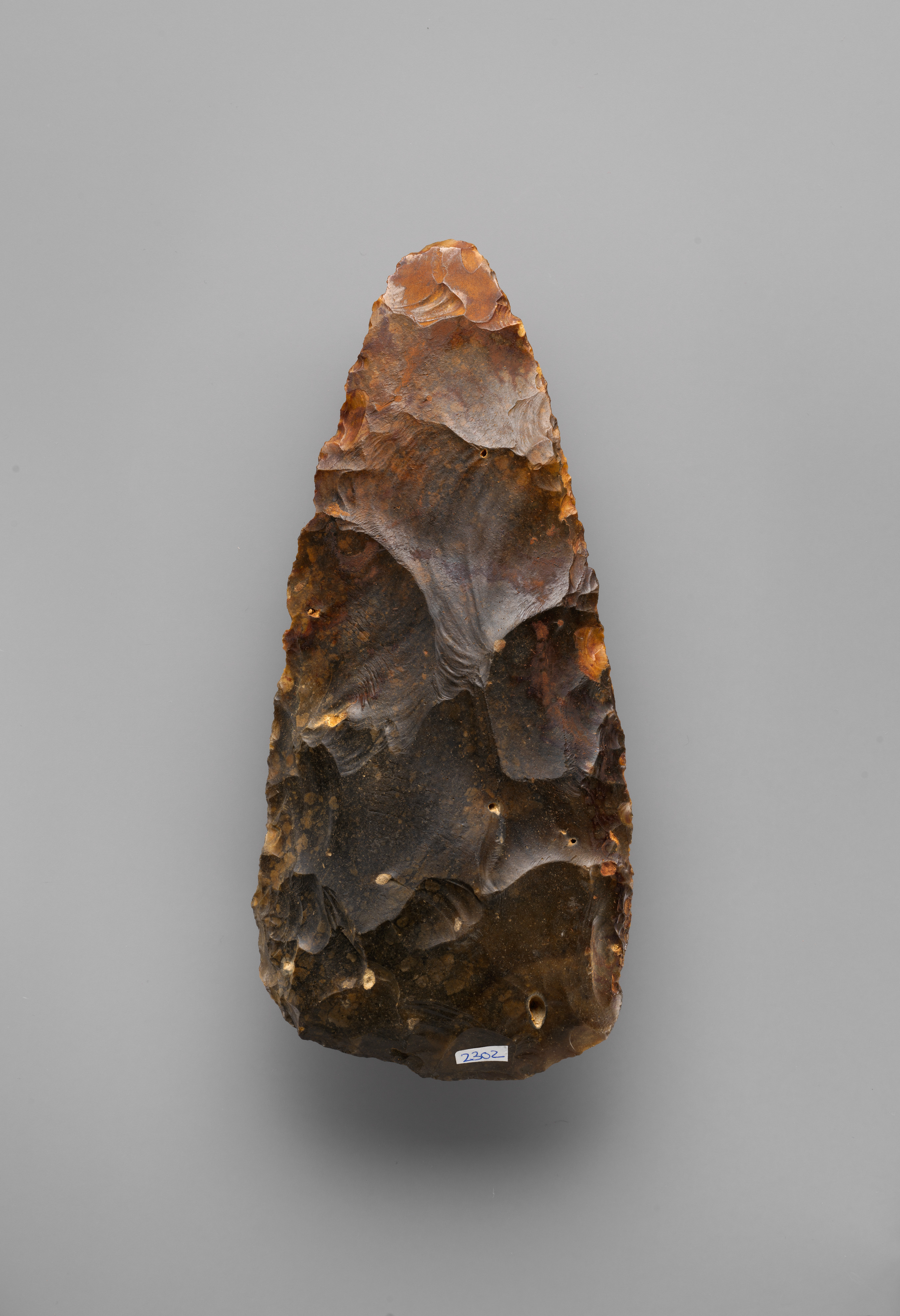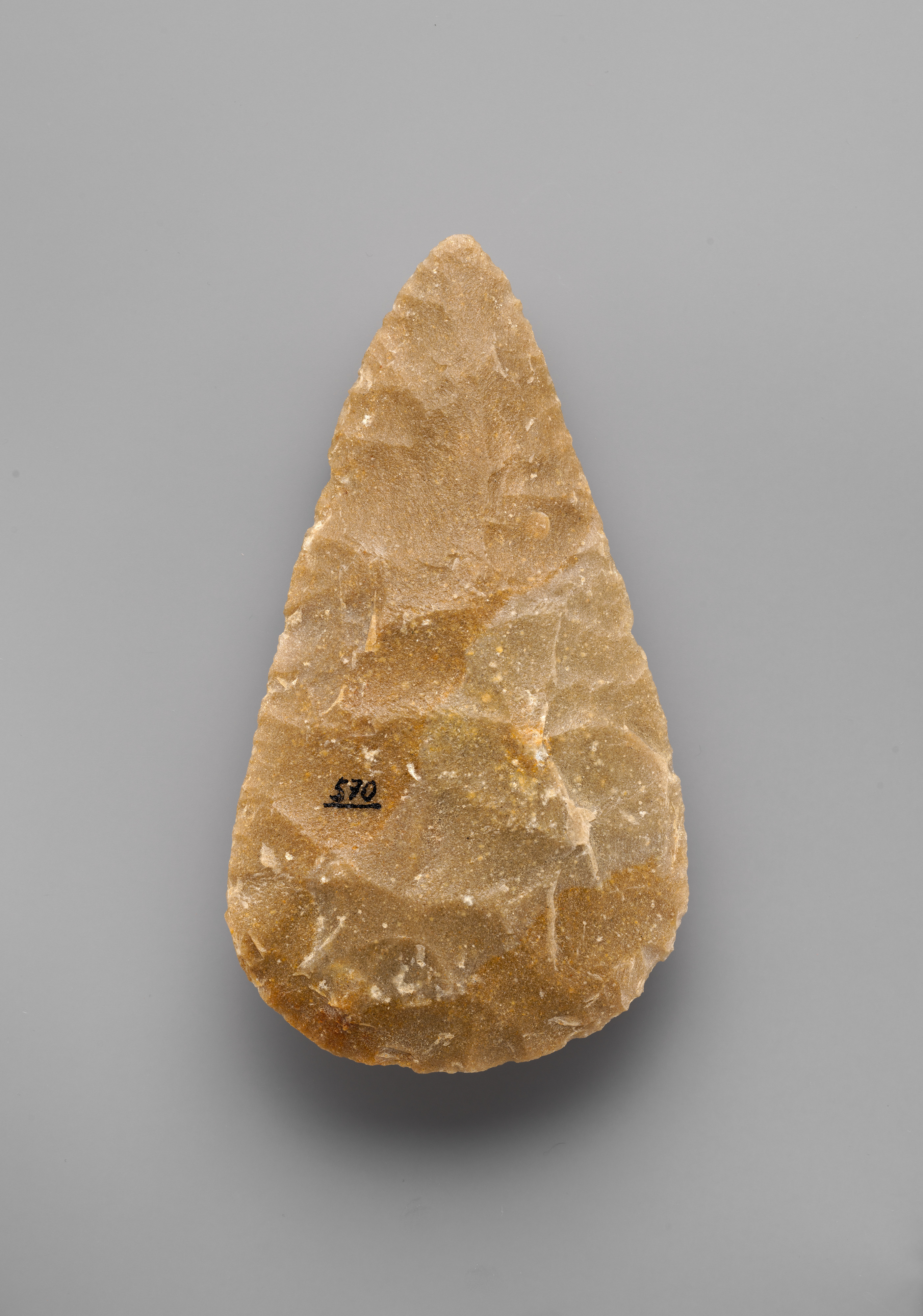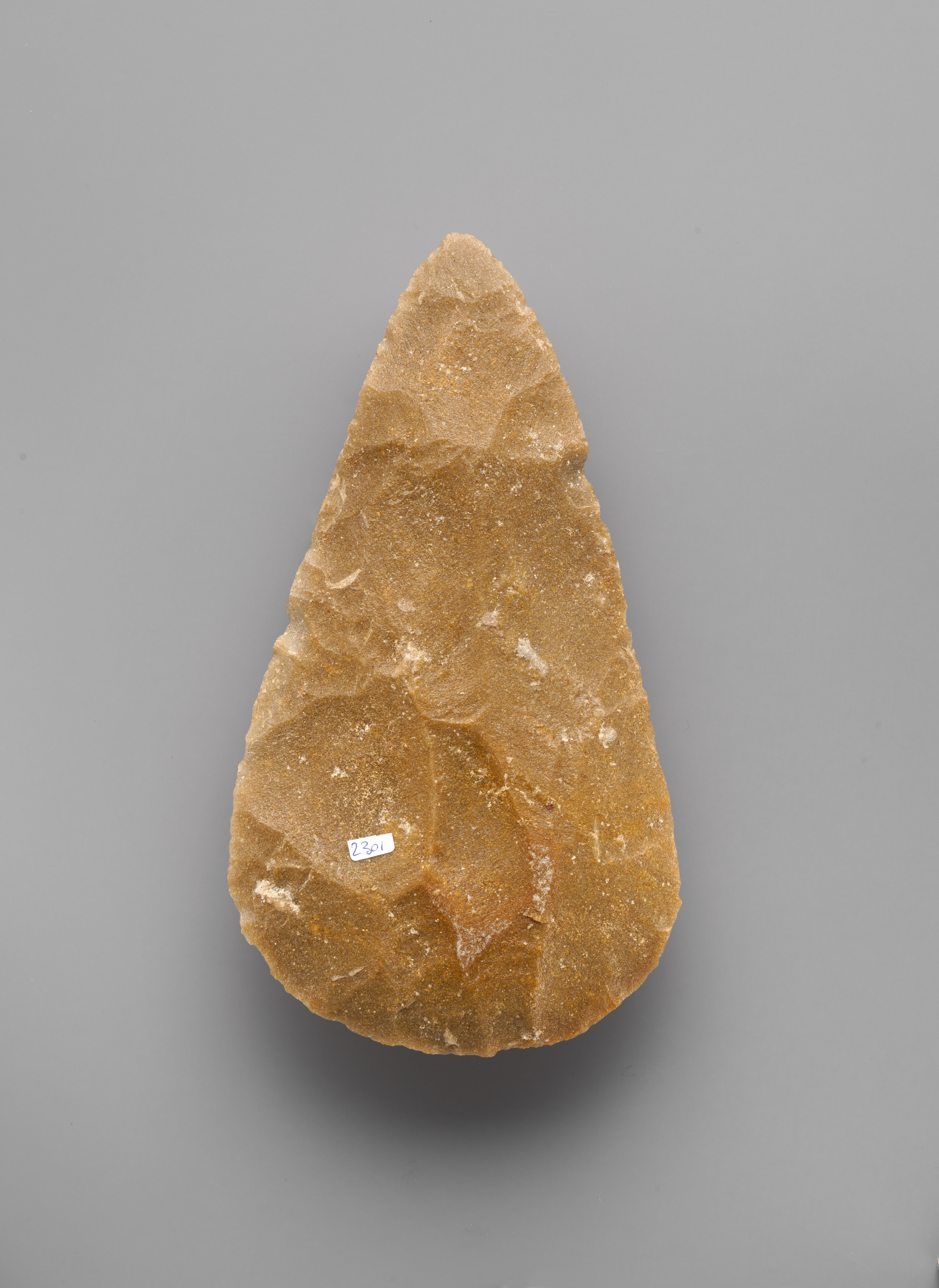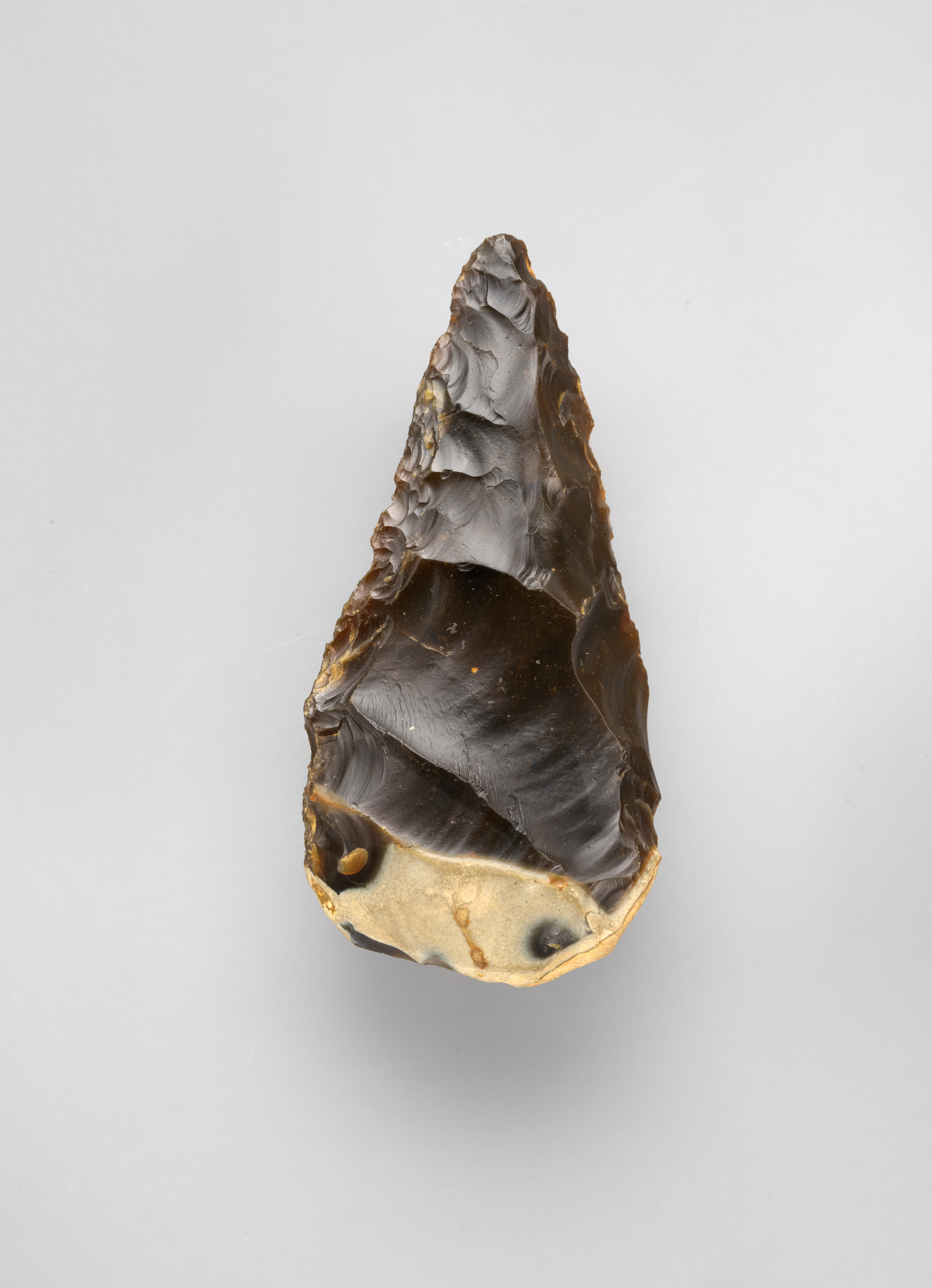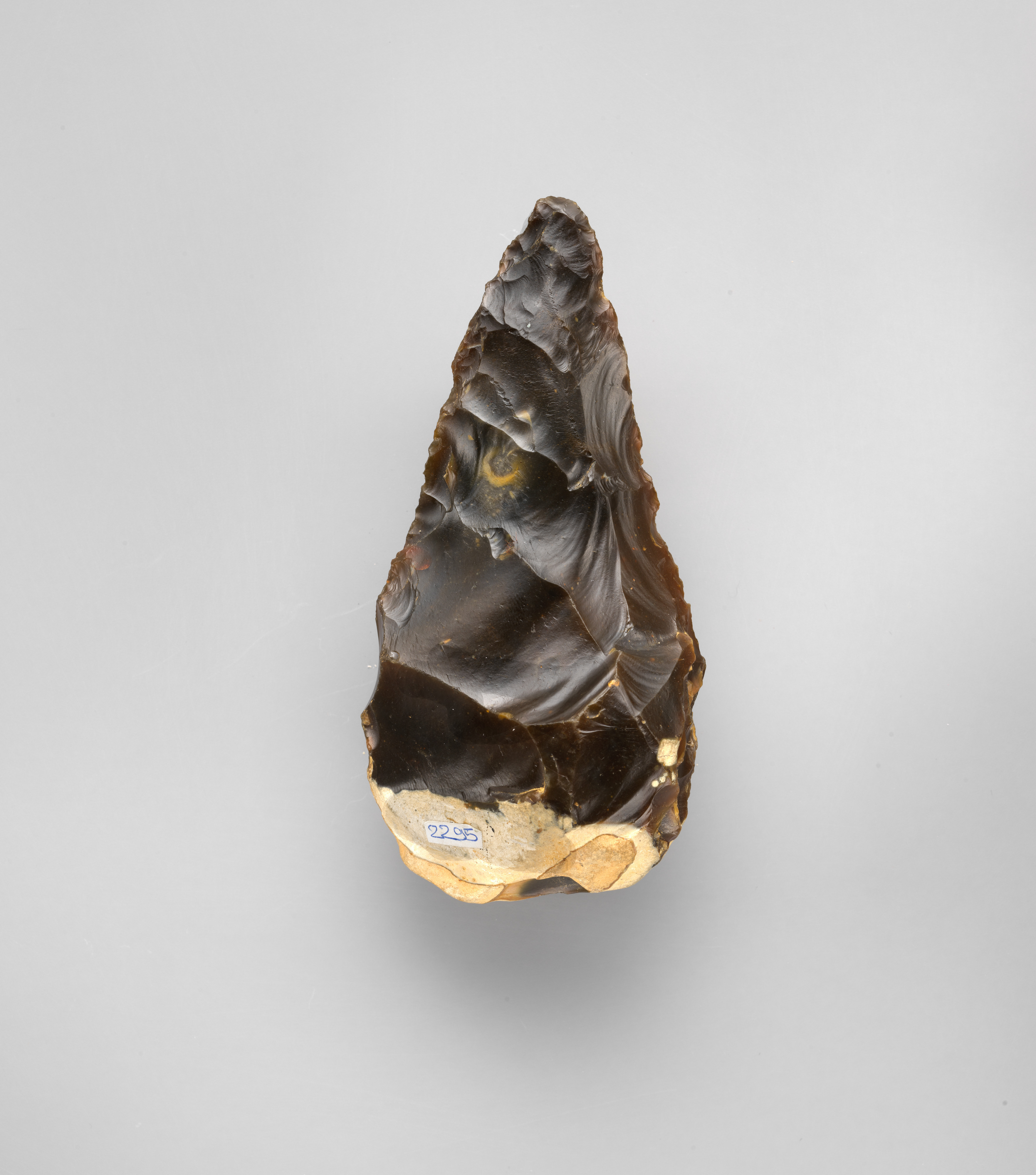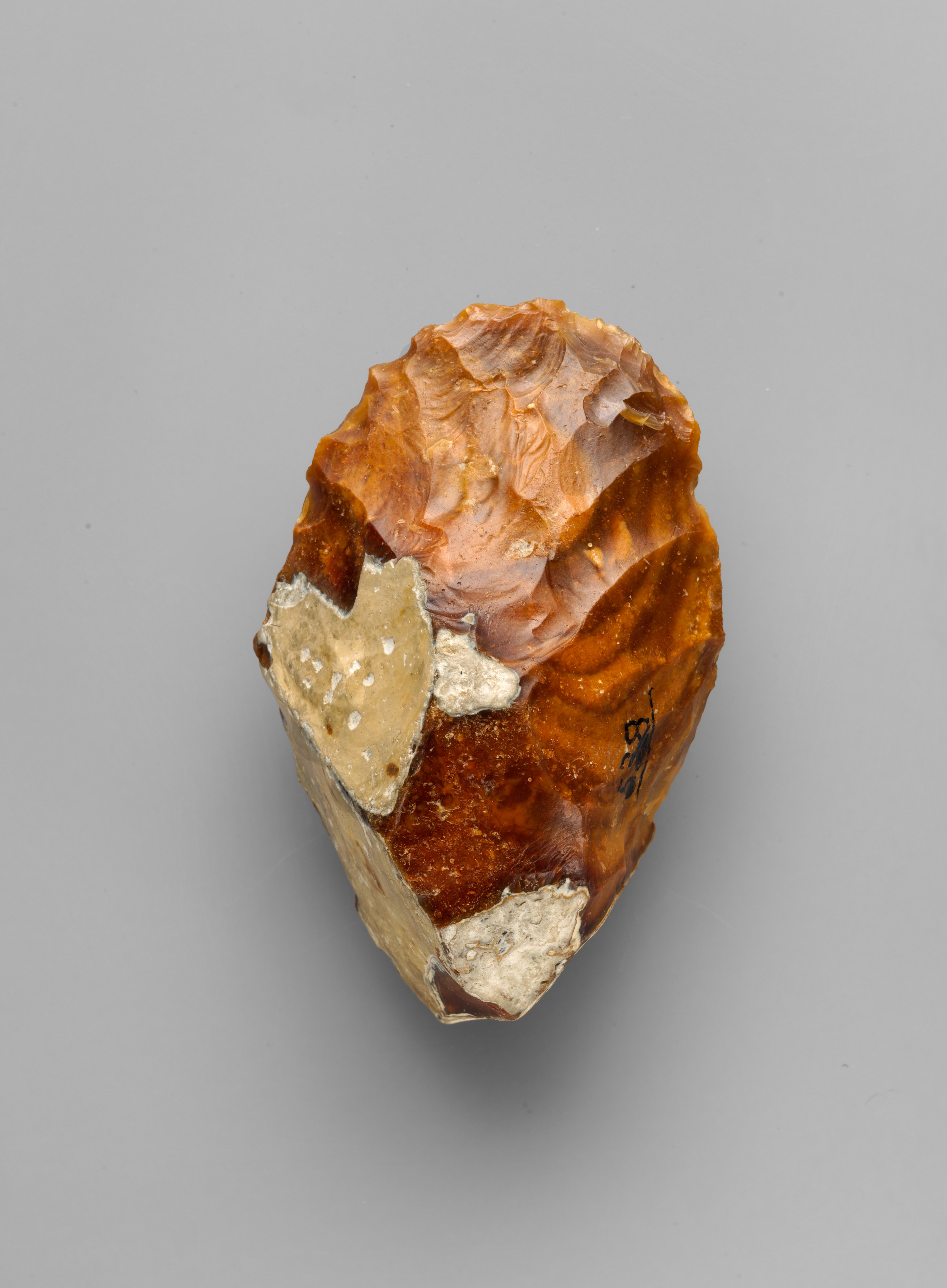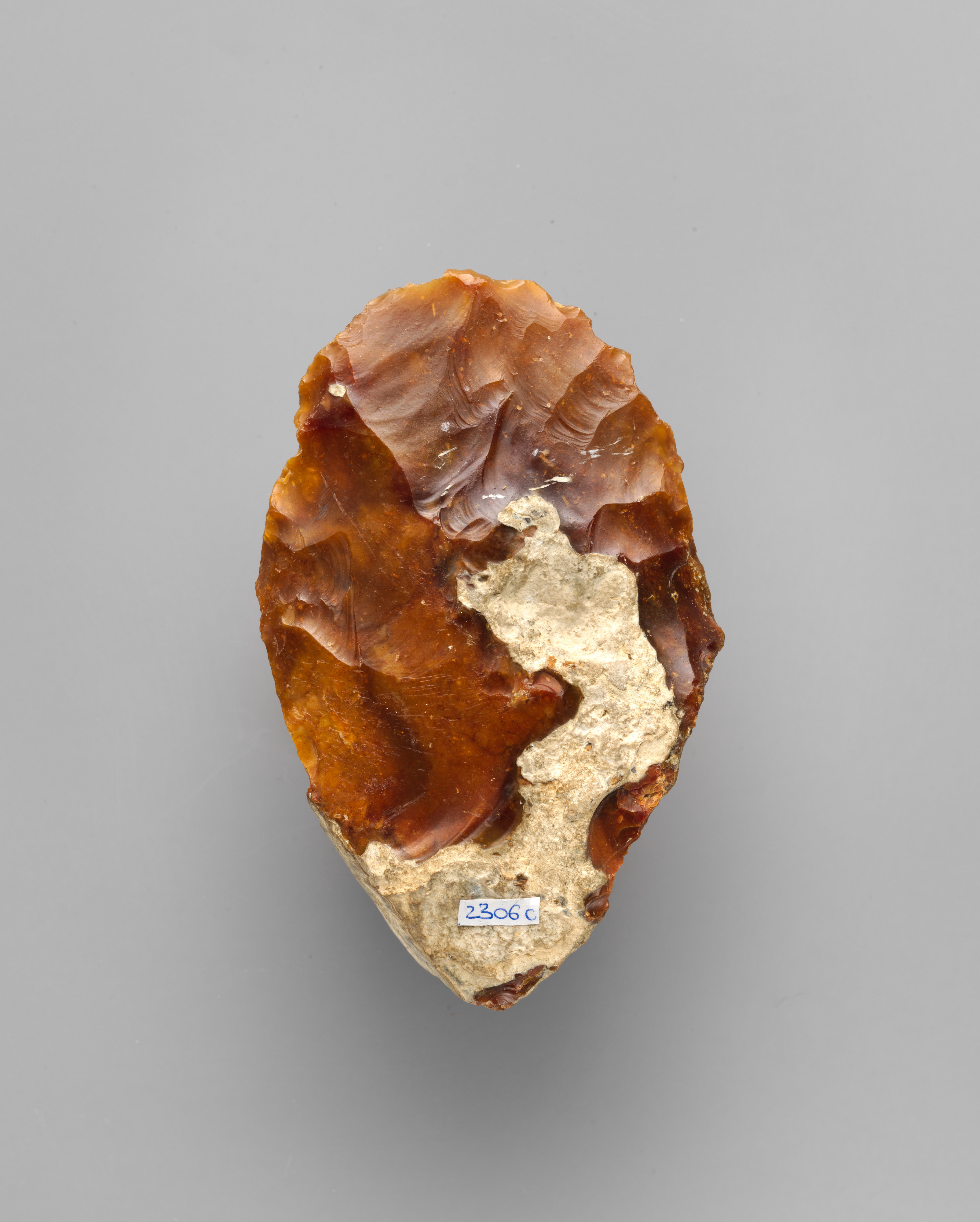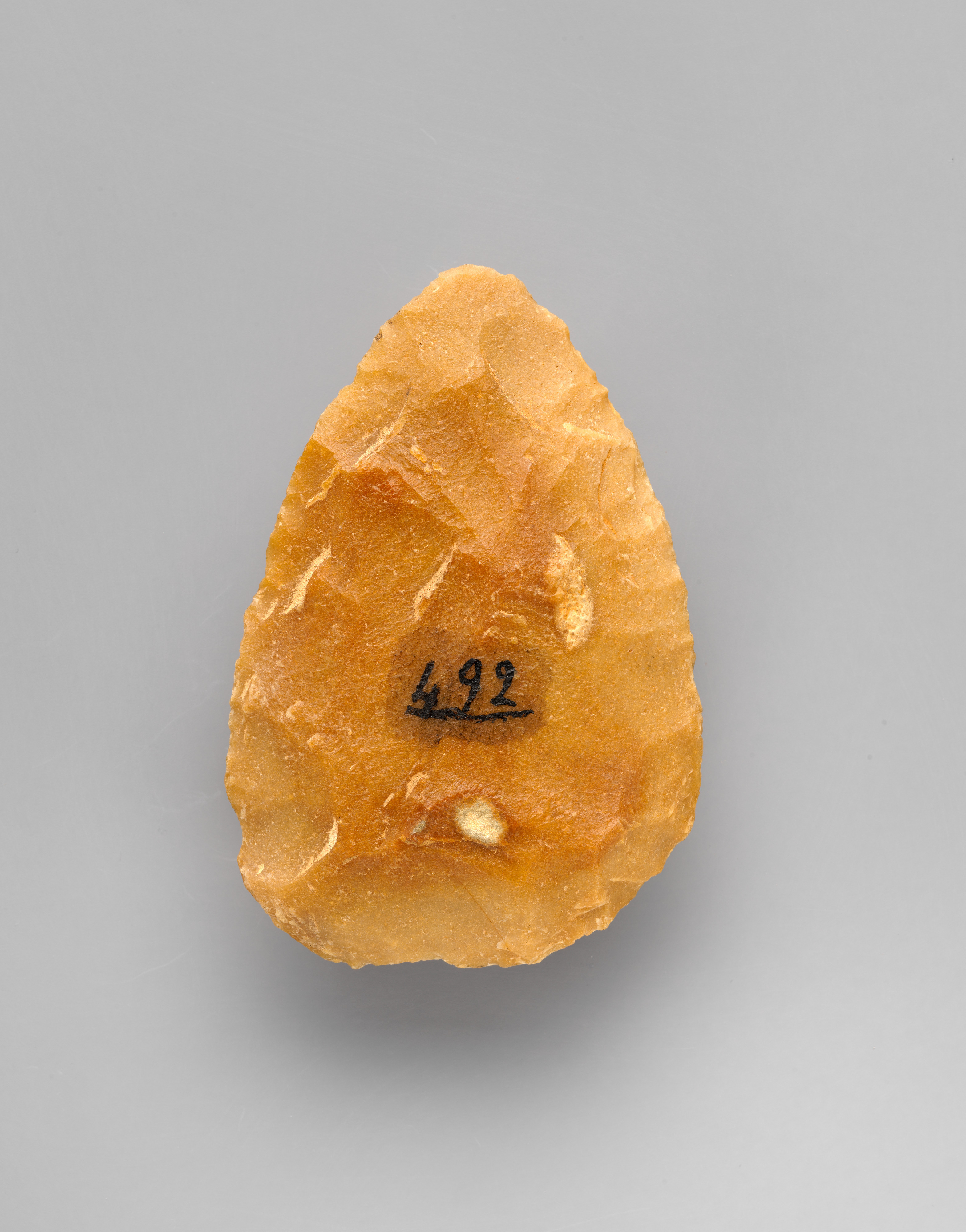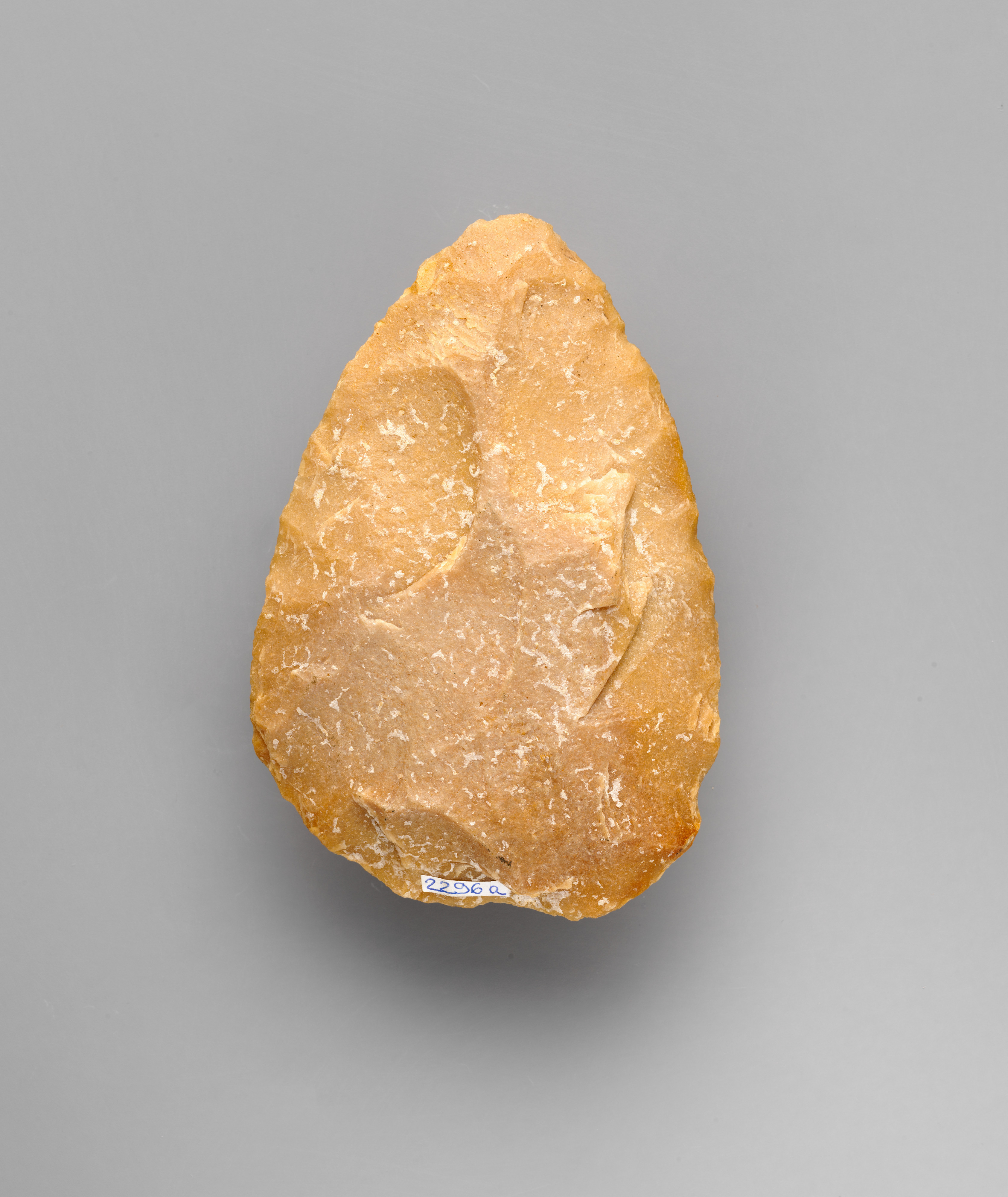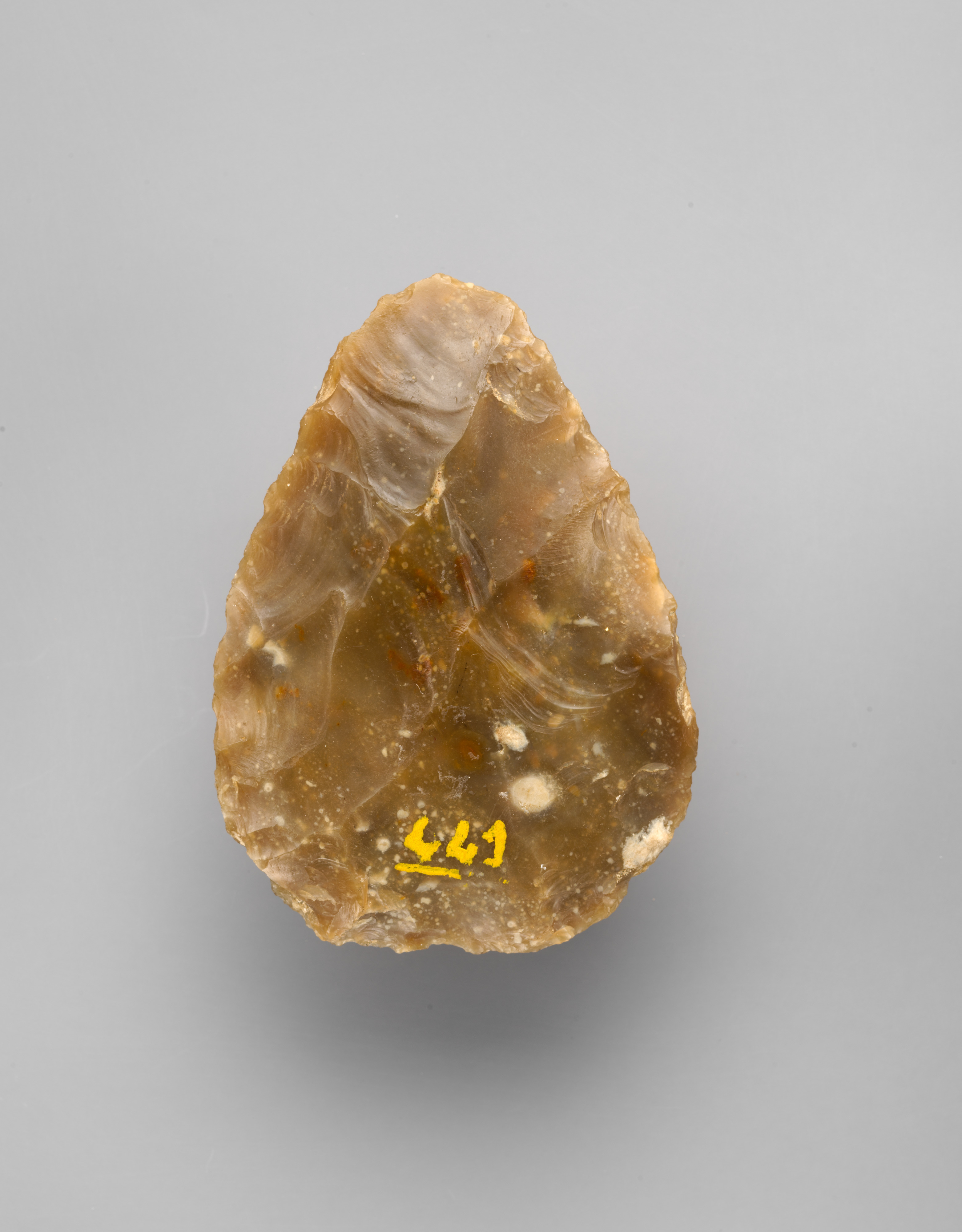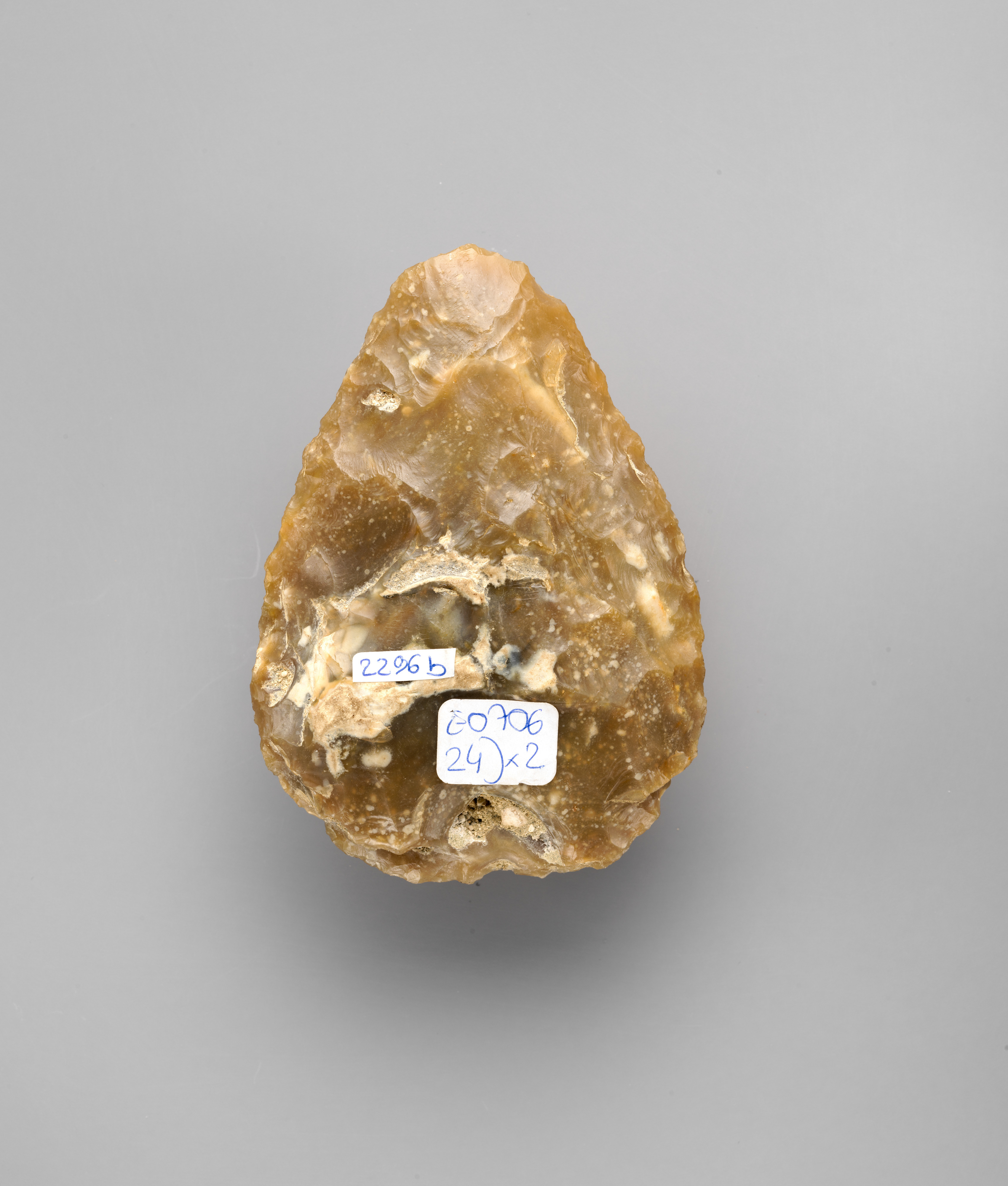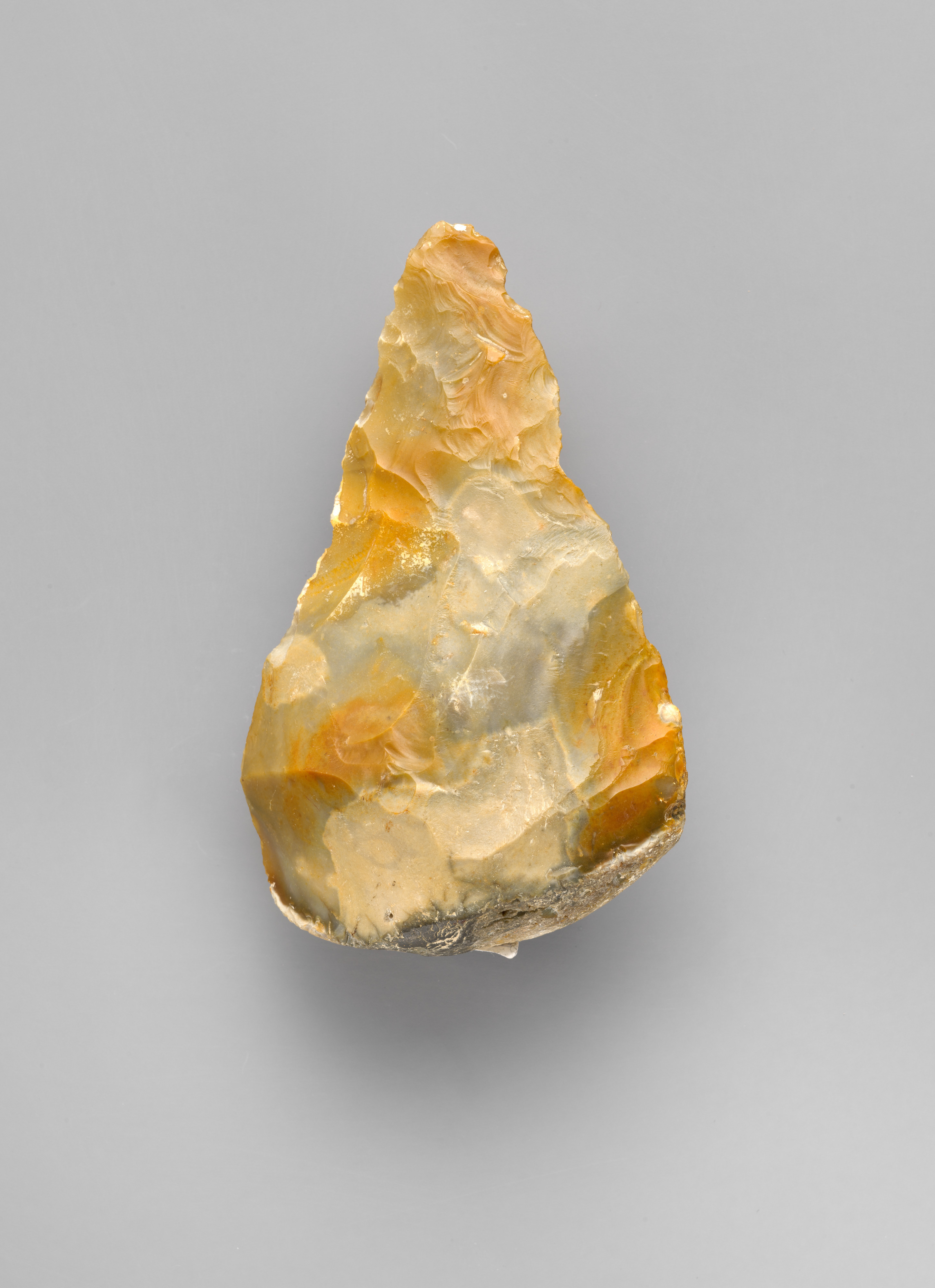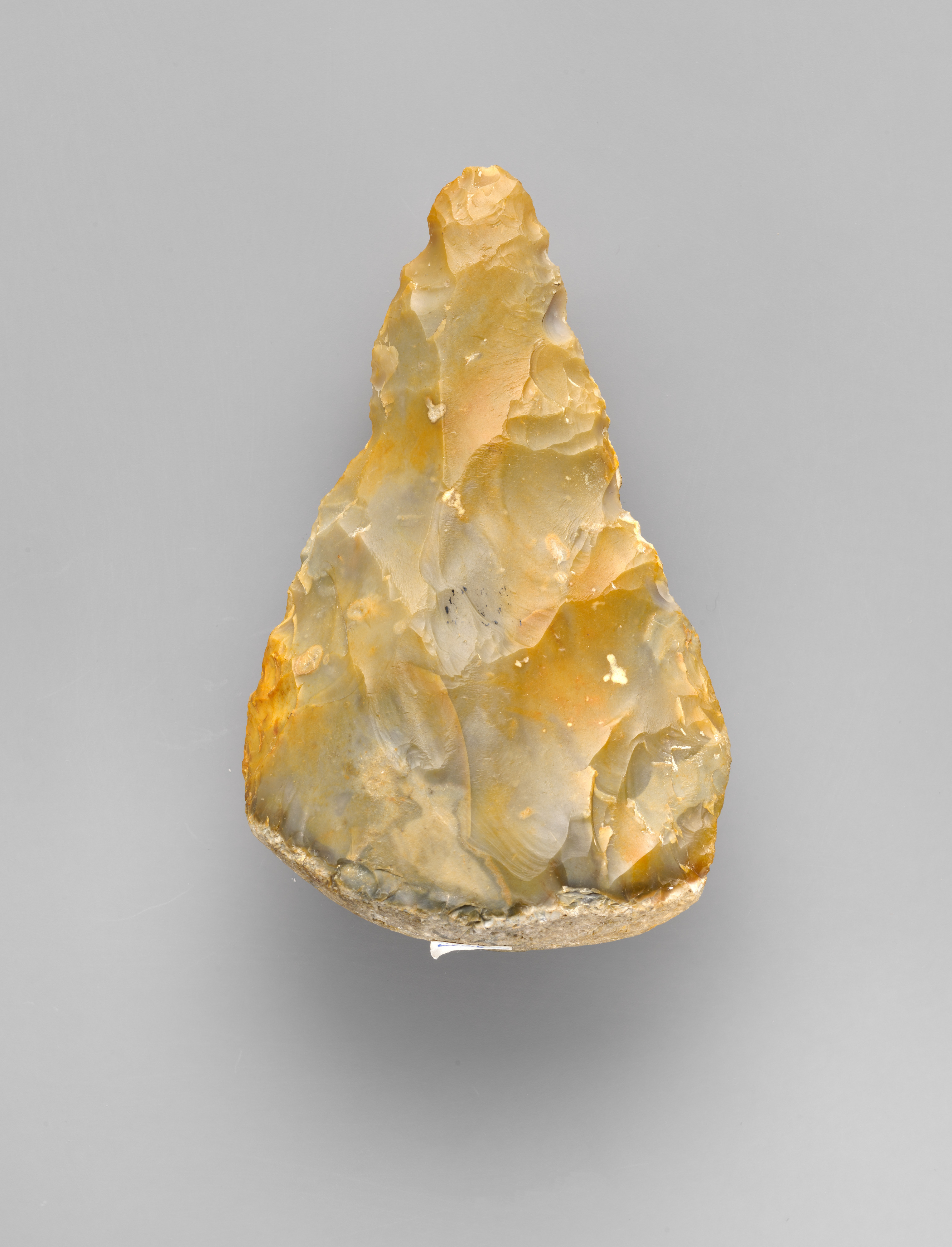Nine Bifaces
Suitable for a variety of tasks, including digging, chopping, and butchering, Paleolithic hand axes are the earliest and longest-used kind of tool made by diverse species of hominids, with documented usage over a period of 1.7 million years. These nine examples, which were all discovered within a small geographic area in Aisne, France, are remarkable for their variety and the high quality of their workmanship. They are a potent manifestation of an early and continuous human interest in perfection of form, and aesthetics in general, as demonstrated by their makers' efforts to endow them with symmetrical faces and edges, well beyond practical requirements. The largest bifaces in this group are so substantial that they would have been of little to no use as tools. Although their specific functions remain a matter of speculation, it is clear that they must have been prized for their appearance rather than utility.
Due to rights restrictions, this image cannot be enlarged, viewed at full screen, or downloaded.
This artwork is meant to be viewed from right to left. Scroll left to view more.
